Disclaimer: This post has been written in collaboration with Very.co.uk, who have gifted us the creative play toys featured in the post.
Are you on a quest to nurture your child’s creativity and imagination? Have no fear; we’ve got you covered! In this comprehensive guide, we’ll explore the world of toys designed to spark creativity, imaginative play, and learning in children. Whether you’re a parent, grandparent, or someone searching for the perfect gift, we’ve got you covered. Join us as we delve into the top picks that inspire and engage young minds.
Why Creative Play Matters

Creative play is not just a frivolous pastime but a crucial developmental tool for children. Children engage in imaginative and unstructured play to explore their world, test boundaries, and develop problem-solving skills. This type of play encourages them to think outside the box and find innovative solutions to challenges, setting the stage for future creativity and critical thinking. Creative play nurtures emotional intelligence by allowing children to express themselves freely, build confidence in their abilities, and understand the complexities of human emotions.
Furthermore, creative play can have long-term benefits that influence various aspects of adulthood. Research has shown that individuals encouraged to engage in imaginative play during childhood tend to exhibit higher levels of resilience, adaptability, and open-mindedness later in life. As society continues to evolve rapidly, these qualities become invaluable assets for navigating complex challenges and confidently embracing change. By recognising the significance of creative play early on, we can harness its potential to shape individuals into adaptable, innovative leaders capable of tackling tomorrow’s uncertainties.
Enhanced Problem-Solving Skills
Children’s enhanced problem-solving skills are a direct result of engaging in creative play. Children who immerse themselves in imaginative scenarios, such as building complex structures with blocks or creating intricate storylines during pretend play, exercise their critical thinking and problem-solving abilities. This type of play allows children to experiment with different solutions and adapt to ever-changing circumstances, honing their ability to think on their feet.
Boosted Confidence
Imaginative play plays a pivotal role in boosting children’s confidence. When kids engage in make-believe scenarios and create their worlds, they can take on different roles, express themselves, and explore various possibilities. This freedom fosters a sense of independence and self-assurance as children learn to trust their instincts and make decisions without constant adult guidance. In the process, they develop problem-solving skills, resilience, and adaptability that contribute to an overall sense of confidence.
Improved Communication
Creative play provides children with a unique platform to express themselves, fostering their communication ability. Children learn to articulate their thoughts and emotions through imaginative role-playing or storytelling in a fun, non-threatening environment. As they engage in creative games and activities, children develop their vocabulary, hone their language skills, and become more confident communicators.
Moreover, creative toys allows children to explore different perspectives and scenarios, which enhances their empathy and understanding of others. Creating characters, settings, and plotlines encourages kids to think critically about effectively conveying ideas and emotions. This helps them express themselves better through words, body language, gestures, and intonation. Ultimately, engaging in creative play nurtures a child’s ability to communicate complex thoughts in an accessible manner while promoting active listening skills essential for effective communication.
Cognitive Development
Creative play is not just about having fun; it also significantly enhances children’s cognitive development. When children engage in imaginative and open-ended activities, they actively use their brains to solve problems, make decisions, and think critically. For example, pretend play can help children develop planning, organising, and decision-making skills by creating scenarios and navigating social interactions with their peers.
Emotional Expression
Creative play is essential for children’s emotional development, providing a safe and enriching environment to express their feelings freely. Children can act out different emotions and scenarios through imaginative role-playing, helping them process and understand their complex feelings. This form of play allows them to explore various ways of expressing themselves, leading to better emotional intelligence and communication skills.
Moreover, creative play encourages children to express their emotions through art, music, and storytelling. Painting, dancing, or writing stories can help kids healthily externalise their inner world, fostering self-awareness and confidence in expressing their emotions. By engaging in these activities, they learn that there are multiple avenues for conveying their emotions beyond words alone.
1. John Adams Super Graph
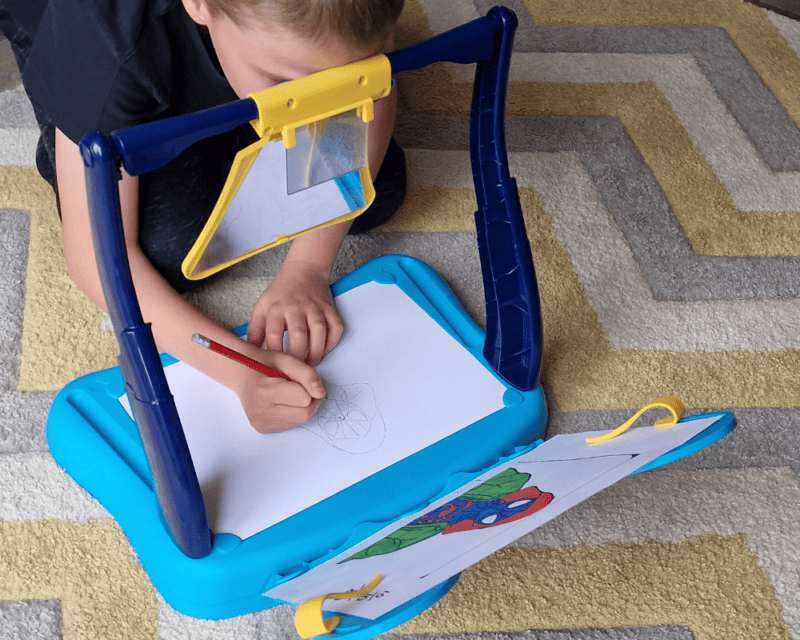
The John Adams Super Graph is not just a toy; it’s a gateway to creativity and imaginative play. Children can unleash their artistic potential in unique and engaging ways with its versatile drawing capabilities. The freedom to create intricate designs and patterns allows for boundless self-expression, fostering an environment where imagination knows no bounds. Moreover, the Super Graph promotes cognitive development by encouraging problem-solving skills and critical thinking through hands-on exploration.
In today’s digital age, the John Adams Super Graph offers a refreshing break from screens and devices, allowing kids to engage in tactile, interactive play that stimulates their creative faculties. Its intuitive design empowers children to experiment with shapes and proportions, promoting spatial awareness and visual-spatial reasoning. As they immerse themselves in the world of possibilities that the Super Graph offers, children can develop confidence in their abilities while honing their fine motor skills with every pen stroke. So, when it comes to nurturing creativity and sparking imaginative play, the John Adams Super Graph stands out as an invaluable tool for young minds to thrive.
Enhanced Drawing Skills
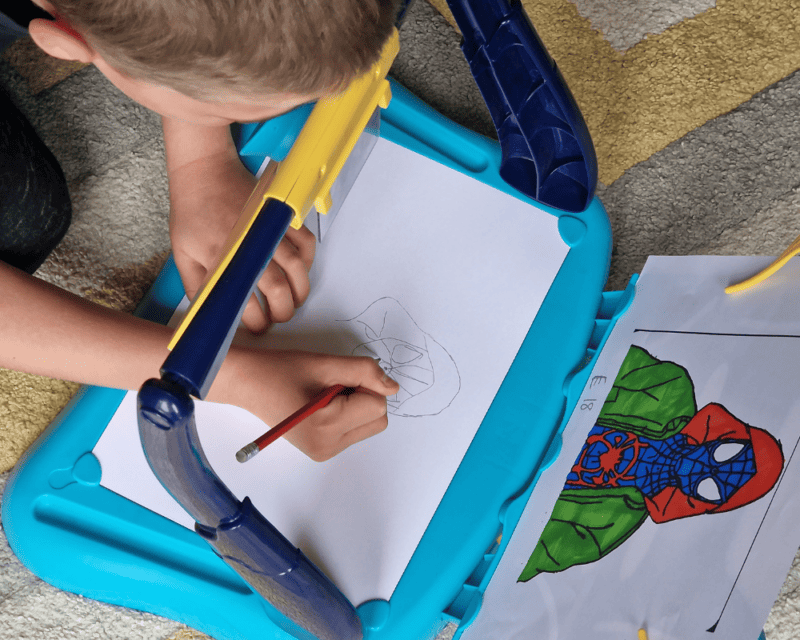
John Adams Super Graph is a game-changer for anyone looking to enhance their drawing skills. One of its key benefits is its versatility, allowing users to create precise and detailed drawings easily.
Fine Motor Skills
Children can enhance their hand-eye coordination, skill, and precision by drawing different shapes, patterns, and designs with the Super Graph. This provides an enjoyable creative outlet and helps develop essential skills crucial for writing, cutting with scissors, and other intricate activities.
Additionally, using the Super Graph encourages children to focus on detail and control their movements more effectively as they manipulate the stylus or pencil around the various templates. This heightened concentration can lead to improved attention span and task persistence. Moreover, by engaging in regular activities with the Super Graph, children can gradually strengthen their hand muscles, resulting in better overall fine motor control and proficiency.
2. Mattel Scrabble Original Family Board Game
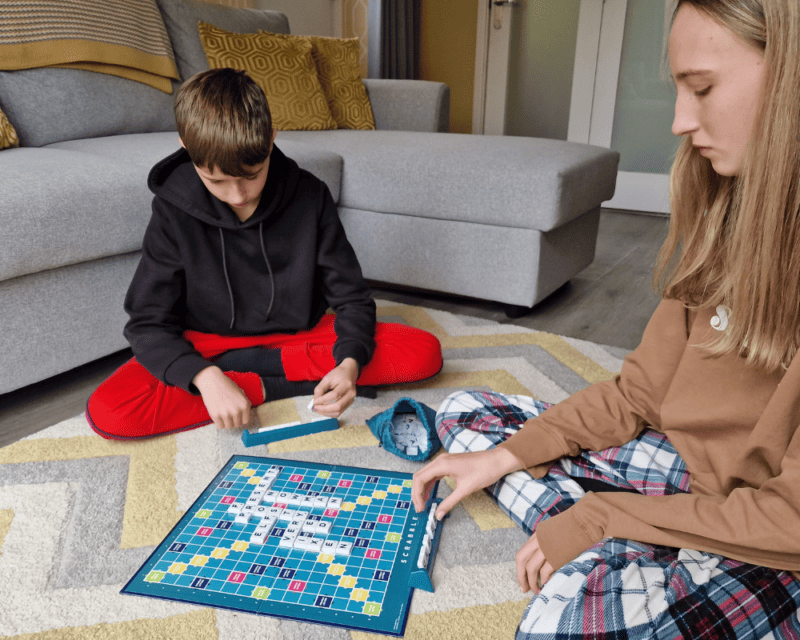
Playing Scrabble has been linked to enhancing imagination and creativity in numerous ways. The game stimulates the brain to think critically and strategically when forming words from a limited set of letters, thus fostering imaginative thinking. As players search for word combinations and evaluate different possibilities, they expand their vocabulary and linguistic skills, opening up new avenues for creative expression. Moreover, the competitive nature of Scrabble encourages individuals to think outside the box, leading to innovative approaches in word construction that can be applied beyond the game board.
Additionally, Scrabble facilitates lateral thinking by challenging players to rearrange letters and envision various word formations based on context and available resources. This practice nurtures creative problem-solving abilities and cultivates a mindset that thrives on experimentation and adaptation. Furthermore, the collaborative aspect of playing Scrabble promotes active communication and teamwork, stimulating creative discussions that can spark fresh ideas and inspire original thought processes. Overall, engaging in this classic word game serves as a dynamic catalyst for nurturing imagination and creativity while providing an enjoyable way to exercise mental agility.
Language Skills
Playing Scrabble provides an interactive and stimulating platform for expanding vocabulary, enhancing spelling abilities, and fostering strategic thinking in the context of word formation. Engaging in Scrabble encourages players to explore new words and their meanings, thus broadening their linguistic repertoire while improving cognitive functions. You can play the game with whatever comes to mind when you see the letters or set a theme like Lillie and Ollie did in their game (though it can make it pretty tricky).
Scrabble cultivates a deeper understanding of phonetics and structure during gameplay. By constantly manipulating letters to form meaningful words, individuals can improve their grammar, syntax, and overall command of the language. In addition to these cognitive advantages, the social aspect of playing Scrabble also facilitates the development of communication skills as participants engage in friendly competition while exchanging ideas and strategies.
Critical Thinking
Kids who play Scrabble must think critically about word formation, spelling, and strategy. This constant mental exercise helps improve their ability to think logically and analytically, which are essential skills for problem-solving later in life.
Scrabble encourages children to expand their vocabulary as they search for new words to use on the board. This continuous exposure to different words and combinations enhances their linguistic abilities and makes them more adept at expressing themselves verbally and in writing. Additionally, playing Scrabble requires concentration and focus as children carefully weigh their letter options and plan strategically – these skills are crucial for academic success and beyond.
Quality Family Time
Playing Scrabble as a family can be an enriching experience for parents and kids. It provides quality family time, encourages healthy competition, and fosters a sense of achievement when children can form words independently. Parents can also better understand their child’s cognitive abilities and thought processes through this collaborative activity.
3. Pokémon TCG Battle Academy 2022 Edition
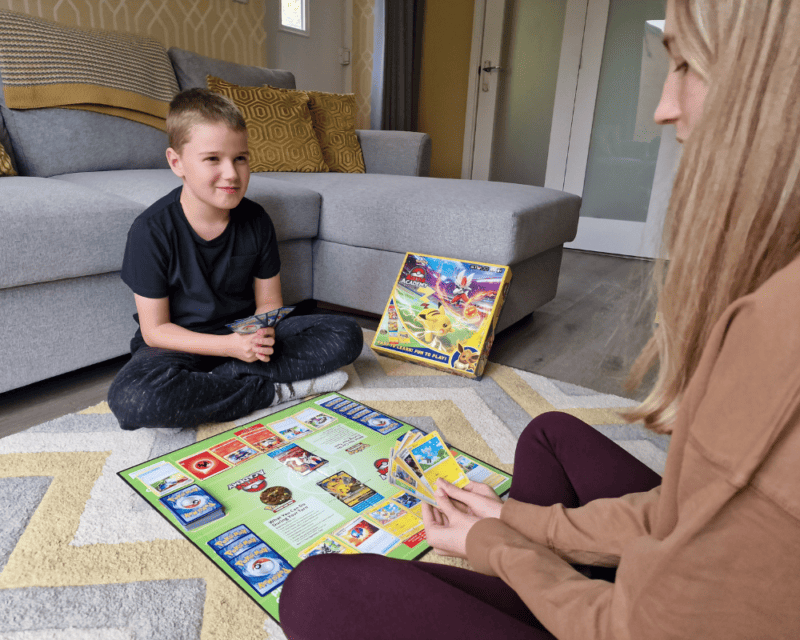
Playing Pokemon TCG Battle Academy can significantly enhance children’s creativity and imagination. The game requires players to strategise, problem-solve, and think critically about their moves, fostering creativity in finding unique solutions to win battles. In addition, the colourful characters, diverse card abilities, and evolving game scenarios spark imaginative thinking as children immerse themselves in the Pokemon universe.
Strategic Thinking
This game requires players to analyse their opponents’ moves, anticipate future plays, and adapt to changing circumstances. Children can enhance their critical thinking and decision-making processes by navigating the game’s rules and considering different strategies.
Pokémon Battle Academy encourages kids to think ahead and consider the consequences of their actions. They learn to weigh risks and rewards, formulate long-term plans, and understand the value of patience and perseverance in achieving their goals. This strengthens their analytical skills and fosters a sense of strategic awareness that can be applied to various aspects of life beyond the game board. Overall, engaging with this game empowers children with crucial cognitive tools to serve them well into adulthood.
Collectable Fun
The Pokémon Trading Card Game offers numerous benefits for children, making it a fantastic option for collectable fun. It provides an excellent way for kids to enhance their strategic thinking and decision-making skills and encourages social interaction as they trade cards and engage in battles with friends. The game fosters critical thinking as players work to build solid decks and formulate winning strategies, promoting cognitive development enjoyably and entertainingly.
Social Interaction
Children playing Pokmon Battle Academy open up a world of social interaction beyond gameplay. The game fosters communication, negotiation, and collaboration as they make decisions, promoting the development of crucial social skills. Children can form friendships and build lasting connections with their peers. This sense of community enhances their social interactions and overall well-being.
4. Pencil Nose from Ideal
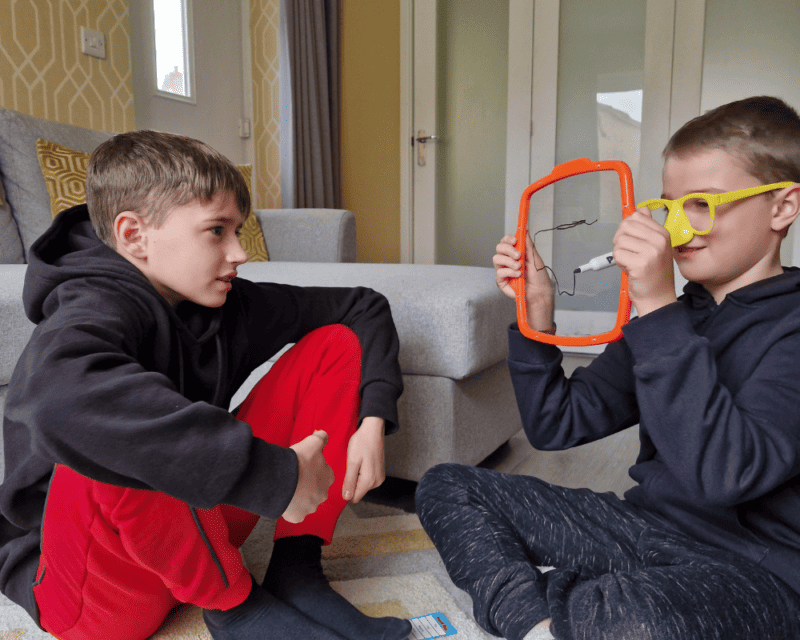
The IDEAL Pencil Nose game offers numerous benefits for children, making it an ideal choice for fostering creativity and cognitive development. This wacky and entertaining game encourages kids to use their imagination and think outside the box as they attempt to draw various objects using a pencil attached to glasses on their noses. By doing so, children enhance their fine motor skills and hand-eye coordination, which are crucial for overall physical development.
Family Fun
Pencil Nose is not just a fun activity for children; it also offers numerous benefits for a family fun time. This game encourages creativity and imagination as kids use their artistic skills to draw with a pencil in their noses. It promotes laughter and bonding as family members take turns guessing the drawings, creating a joyful atmosphere that fosters strong relationships. Additionally, the game helps improve communication skills as children describe their drawings, enhancing their ability to express themselves.
Expressive Play
By donning special glasses and drawing with their nose, kids are encouraged to let go of their inhibitions and embrace their creativity without worrying about perfection. This type of free-form play can help children develop self-expression and confidence in their artistic abilities, promoting a positive mindset towards making mistakes and embracing imperfections as part of the creative process.
5. LEGO Star Wars BD-1™
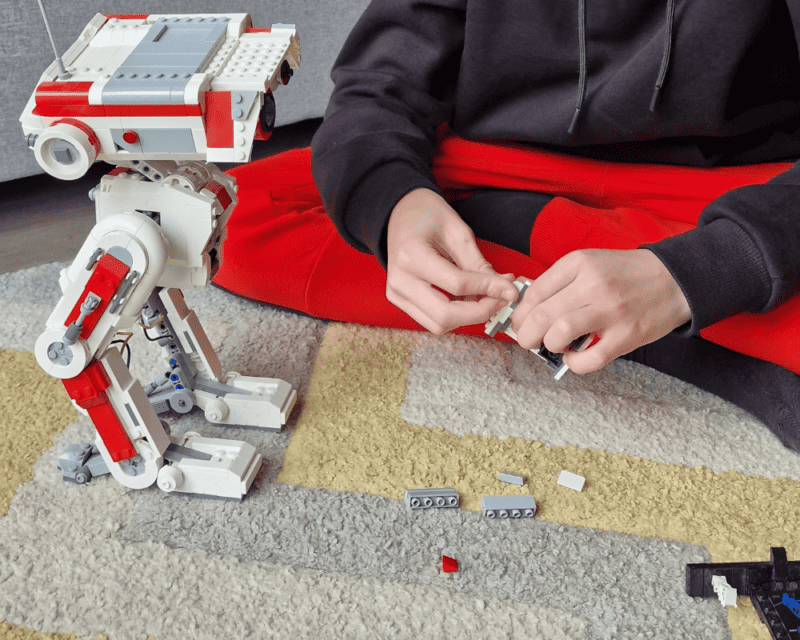
Playing with LEGO Star Wars BD-1 encourages imaginative storytelling as children immerse themselves in the Star Wars universe. As they construct the droid and incorporate it into various scenarios, they exercise their narrative skills by developing original plotlines and character interactions. This imaginative play promotes language development and helps kids learn to express themselves creatively through storytelling, enhancing their communication abilities. Ultimately, the combination of creative construction and immersive storytelling through LEGO Star Wars BD-1 provides an engaging platform for children to expand their creativity and imagination in a fun and interactive way.
Construction Skills
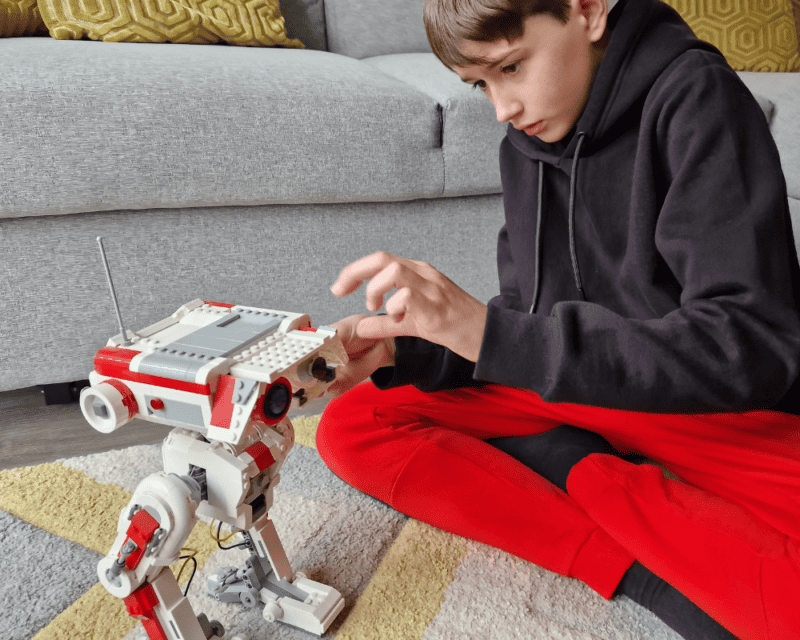
The Lego set’s intricate pieces and complex structures require precision and problem-solving, encouraging kids to think critically and develop spatial awareness. Through building and rebuilding BD-1, children can learn about symmetry, balance, and structural integrity, laying the groundwork for future architectural and engineering pursuits.
STEM Learning
LEGO Star Wars BD-1 offers a unique platform for children to dive into STEM learning through hands-on play. Kids engage in problem-solving and critical thinking as they build the intricate BD-1 droid model and simulate its functions. This process enhances their spatial awareness and fine motor skills and nurtures their creativity as they customise their droid with different elements.
In Conclusion
Fostering creativity and imagination in children is a worthy goal; these toys are fantastic tools to help you achieve it. Whether you choose the artistic John Adams Super Graph, the wordplay of Mattel Scrabble, the strategy of Pokémon TCG Battle Academy, the humour of Ideal Pencil Nose, or the construction of LEGO Star Wars BD-1™, you’re providing your child with valuable opportunities to learn and grow through play. So, go ahead and invest in these creative playthings, and watch your child’s imagination soar to new heights.


So many fab ideas! Scrabble is a big fave here. Pencil Nose sounds like great fun too.
I have been really surprised by how much my kids have enjoyed Scrabble, they ask to play it most nights.
Oh Gosh, Harry would love that pencil nose drawing game – how funny.
Some very great choices there, and I love they can all be played with together too
Pencil Nose is absolutely brilliant, we have had so much fun playing it.
I love anything that gets the kids being creative – that Lego droid is on Isaac’s wish list and my kids love that Pokémon game too
BD1 is awesome. Mind you I made him carry it up to his room when he had finished, I wasn’t going to be responsible for dropping it 😉